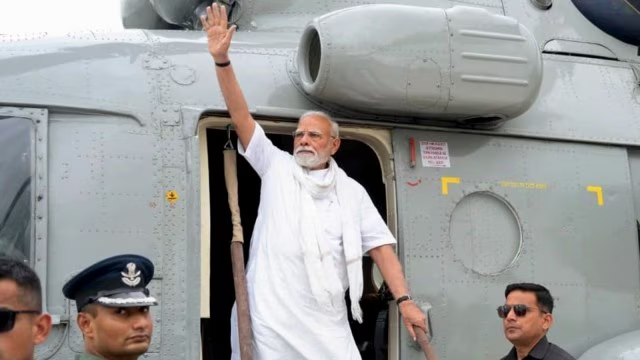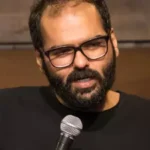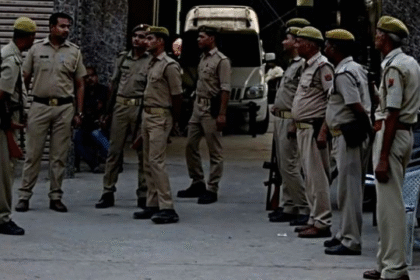Varanasi Awakens – PM Modi Unveils the Rudra Roop and Operation Sindoor Begins
Where Divinity Meets Strategy
On a rain-washed morning in Varanasi—Prime Minister Narendra Modi’s parliamentary constituency and one of the oldest living cities in the world—a historic unveiling unfolded on sacred ground. In the ancient corridors of the Kaal Bhairav temple, amidst a sea of saffron, chants, and security personnel, PM Modi unveiled the Rudra Roop of Kaal Bhairav: a fierce, awe-inspiring idol representing Lord Shiva in his guardian aspect.
This event was not merely ceremonial. It was symbolically and strategically potent. Alongside the religious inauguration, the Prime Minister also launched Operation Sindoor, a comprehensive initiative aimed at enhancing spiritual infrastructure, restoring temple precincts, and tightening security in and around Varanasi’s key religious sites.
As the bells tolled and conch shells echoed, the moment revealed something deeper—a fusion of cultural rejuvenation and statecraft, woven together under the banner of political symbolism, spiritual legacy, and administrative precision.
Kaal Bhairav: The Eternal Sentinel of Kashi
In Hindu cosmology, Kaal Bhairav is not a deity to be approached casually. He is a fierce incarnation of Lord Shiva—protector of the holy city of Kashi (Varanasi) and guardian of time, morality, and cosmic order. Devotees believe that no pilgrimage to Varanasi is complete without first seeking Bhairav’s permission.
The newly unveiled Rudra Roop, cast in imposing bronze and encased in ornate stonework, pays homage to this philosophy. Its aesthetic is rooted in Tantric iconography, with glaring eyes, a garland of skulls, and a trident poised with spiritual authority. Designed by master sculptors and temple architects, the idol reflects the confluence of ancient art and contemporary craftsmanship.
By unveiling the Rudra Roop personally, PM Modi sought not only to restore a powerful symbol of Sanatan dharma but to reinforce the cultural legitimacy of his governance—an act that positions him as both administrator and custodian of Indian civilization.
Operation Sindoor: A Mission for Security and Spiritual Renewal
Parallel to the spiritual dimension was a decisive state action—Operation Sindoor. Named after the sacred vermillion powder used in Hindu rituals, the operation carries multiple layers of meaning: purity, protection, and permanence.
The initiative aims to:
- Upgrade temple security using AI-enabled surveillance, drone mapping, and intelligent crowd control.
- Restore and digitize historical records of shrines, saints, and pilgrimage routes.
- Streamline pilgrim access with smart QR-based passes, multilingual assistance kiosks, and real-time footfall tracking.
- Expand temple tourism infrastructure, including clean drinking water, modern restrooms, battery-operated transport, and medical assistance units.
But Operation Sindoor is not limited to logistics—it is deeply political. In an era where religious identity and state policy are often intersecting, the project cements Varanasi’s role as a spiritual capital and a political epicenter.
The Political Theatre of the Sacred
PM Modi’s presence in Varanasi carries weight beyond ritual. This is his constituency—a city where he has consistently blended the spiritual with the political. The Kashi Vishwanath Corridor project, launched earlier in his term, was one such initiative that physically and symbolically opened up sacred geography for modern India.
The unveiling of Rudra Roop and the launch of Operation Sindoor continue that narrative.
In optics, tone, and messaging, the event was carefully calibrated. Modi’s attire—a traditional kurta-pajama with an angavastram draped over his shoulder—echoed simplicity. His speech, delivered not from a political podium but within temple precincts, avoided electoral overtones and focused on civilizational revival, invoking Rishi traditions, the legacy of saints, and the ancient resilience of Kashi.
By doing so, he created a frame where the Prime Minister is not merely a leader—but a restorer of dharma, a sevak of India’s eternal values.
The Varanasi Model: Where Urban Transformation Meets Spiritual Continuity
In the past decade, Varanasi has emerged as a template for how ancient cities can be modernized without losing their soul. From smart lighting in narrow alleys to Wi-Fi enabled ghats, from electric crematoria to multi-tiered parking near temples, the city has undergone a radical transformation.
Operation Sindoor builds upon that momentum. It envisions Varanasi not just as a site of pilgrimage, but as a living embodiment of Bharat’s civilizational arc—a place where tourists, scholars, monks, and tech-driven administrators converge.
Through partnerships with local artisans, ASI historians, tourism departments, and private security firms, the government is crafting a spiritual ecosystem that goes beyond rituals—it engages with urban design, technological foresight, and cultural diplomacy.
Sacred Symbols, Strategic Signals
The Rudra Roop unveiling and the launch of Operation Sindoor mark a pivotal moment—not just for Varanasi, but for India’s evolving narrative. This is more than beautification or religious ritual. It is the strategic elevation of cultural capital into statecraft.
In Modi’s Varanasi, the past is not forgotten—it is weaponized, revered, and reimagined.
The Rudra Roop glares not just at pilgrims but at modernity itself—challenging it to reconcile speed with sanctity, governance with grace, and power with prayer.
Varanasi is not just a city. It is a metaphysical map, a civilizational rhythm, and a sacred grid. Long before Google Earth plotted satellite views of urban India, the spiritual topography of Kashi had already been meticulously designed—its energy flowing through shrines, ghats, akharas, mutts, and sacred groves. At the center of this sacred geometry lies a potent triangle: Kaal Bhairav, Kashi Vishwanath, and the spine of the city’s ritual life—now being restructured under Operation Sindoor.
This cultural axis is not an abstract construct. It is lived, walked, chanted, and bathed in. And now, with the unveiling of the Rudra Roop of Kaal Bhairav and the consolidation of pilgrimage routes and sacred infrastructure, Varanasi is witnessing not just restoration but reinvention—one where ancient dharma meets contemporary urbanism.
The Triad of Power: Bhairav, Vishwanath, and the Pilgrim Grid
To understand Varanasi’s symbolic core, one must first grasp the spiritual geography of its three pillars:
- Kaal Bhairav – The fierce guardian, known as the “Kotwal of Kashi,” who grants pilgrims the permission to enter the city’s divine fold. His gaze is not gentle—it purifies through fear, responsibility, and karmic reckoning.
- Kashi Vishwanath – The peaceful embodiment of Lord Shiva as the universal sovereign. The temple draws millions annually, now more accessible due to the ambitious Kashi Vishwanath Corridor, a flagship project of the Modi government.
- The Pilgrimage Spine – A corridor of ghats, temples, akharas, and streets where rituals unfold daily—now being modernized and secured under Operation Sindoor.
Together, these three represent not just physical destinations but a spiritual itinerary—a route that cleanses the devotee, transforms the tourist, and educates the student of Indic culture.
Operation Sindoor as Urban Dharma
Operation Sindoor isn’t just about improved footpaths or biometric passes. At its core, it is urban dharma—a concept that holds cities accountable not just for civic delivery but for spiritual integrity.
The initiative is focused on the following strategic layers:
- Ritual Intelligence Infrastructure: Mapping footfall during festivals like Dev Deepawali and Mahashivratri to deploy responsive sanitation, water distribution, and crowd control systems.
- Sacred Security Grid: Real-time surveillance across temple precincts, integrated control rooms, RFID tags for large gatherings, and AI-assisted anomaly detection in densely populated zones.
- Digital Archiving and Temple Cartography: Operation Sindoor will digitize over 3,000 lesser-known shrines, preserving oral traditions, rituals, and prarthana paddhati (worship procedures).
- Purohit-Welfare Integration: Welfare schemes for temple priests, traditional performers, and ghantakar (bell ringers), ensuring that the custodians of culture are not left behind by development.
By doing this, the government is signaling a philosophical shift in governance—where temple towns are not seen as chaotic relics but as zones of sacred management and heritage-led urban policy.
Sacralization of Infrastructure: Modi’s Civilizational Blueprint
Under Prime Minister Modi, India’s infrastructure has often carried civilizational motifs—be it the Ram Path in Ayodhya, the Char Dham project in Uttarakhand, or the Bharat Mandapam in Delhi. In Varanasi, this approach takes a deeply intimate form.
Here, concrete is not just poured for roads; it is poured for parikrama paths. LEDs are not merely streetlights; they illuminate the path for rituals at dusk. Drainage isn’t just sanitation—it is purification of tirtha spaces. In essence, statecraft is being spiritualized.
This “sacralization of infrastructure” serves a dual purpose:
- Electoral Messaging: It helps the government connect emotionally with the Hindu majority while showcasing development without alienating secular institutions.
- Cultural Assertion: It reclaims the narrative of what Indian urbanity looks like—distinct from Western urban templates, rooted in Indic memory.
In that light, Operation Sindoor is not just a project—it is part of Modi’s cultural state-building vision.
The Temple Ecosystem: Inclusion or Instrumentalization?
Yet, this transformation is not without criticism. Urban scholars, cultural historians, and civil society activists have raised key concerns:
- Are these temple makeovers inclusive of local communities, especially the economically weaker ones who live near temple clusters?
- Are priests, vendors, widows, and pilgrims part of the decision-making, or are they mere performers in a curated religious tourism economy?
- Is the architecture genuinely traditional, or is it a modern aesthetic of imagined antiquity?
These questions are essential, especially in a city like Varanasi where every stone has memory, every corner holds myth, and every ritual has nuance. Cultural revival must not become cultural erasure.
Building Kashi, Brick by Brick, Soul by Soul
As Part 2 of this exploration concludes, what emerges is a city on the edge of spiritual resurgence and bureaucratic reinvention. The Rudra Roop of Bhairav, the silent gaze of Vishwanath, and the meticulously engineered blueprint of Operation Sindoor together form a living triad.
This is not merely heritage tourism. This is spiritual architecture being chiseled into policy, where faith is not incidental—it is infrastructural.
And in that paradigm, Varanasi becomes more than a constituency. It becomes the constitutional heart of Modi’s India, where dharma, design, and democracy converge.
In the timeless lanes of Varanasi, where incense smoke swirls into the morning mist and centuries-old chants echo off stone temples, a quiet transformation is taking place—the convergence of sanctity and surveillance. No longer relying solely on human vigilance, India’s holiest spaces are being reimagined through the lens of digital security and AI intelligence.
Under Operation Sindoor, the sacred city of Kashi is not only being beautified and spiritually revitalized—it’s also being hardened, guarded, and digitally fortified. From smart CCTV grids to predictive analytics, temple towns like Varanasi are becoming prototypes for security-led religious urbanism.
In a world grappling with rising terror threats, crowd disasters, cyber vulnerabilities, and organized criminal activity near pilgrim sites, the question facing India is no longer if temple security needs reform—it is how deep and how far it must go.
The Temple as a Vulnerable Node
Contrary to romantic portrayals, India’s temples are not just spiritual sanctuaries—they are also soft targets. They attract massive crowds, house precious artifacts, and often exist in densely populated, unregulated urban pockets.
Varanasi alone hosts:
- Over 3,300 functioning temples, shrines, and mathas.
- Daily footfall exceeding 2 lakh pilgrims during festival peaks.
- More than 100 religious processions annually, many of them high-risk.
And yet, until recently, security at these sites was patchy—largely manual, underfunded, and reactive. The Bhairav temple had a lone camera for years. The Kashi Vishwanath temple relied heavily on physical frisking and inconsistent metal detection.
Operation Sindoor changes that. It upgrades temple security from a ritual to a system.
Surveillance as Seva: A Shift in Perception
One of the most sensitive aspects of sacred surveillance is public perception. Devotees don’t like being watched while they pray. Cameras near sanctums, scanners at entry gates, and automated barriers can seem invasive in spaces that are traditionally intimate.
To counter this, Operation Sindoor adopts a devotee-first design philosophy:
- Cameras are camouflaged inside temple bells, floral columns, and wooden brackets.
- AI monitors crowd patterns in real time without facial identification, preserving anonymity while ensuring threat detection.
- Loudspeakers no longer blare security warnings; instead, they integrate Sanskrit verses that gently advise crowd discipline, blending safety with sacredness.
This is not just surveillance—it is seva with sensors, a new age model where darshan and data coexist.
The Four Pillars of Sacred Security under Operation Sindoor
- Real-Time Intelligence Monitoring
Command and control centers now oversee a 24/7 live feed of temple perimeters, ghats, alleyways, and pilgrim routes. If crowd density crosses danger thresholds, alerts are triggered in real-time for immediate diversion and intervention. - Drone Surveillance and Aerial Mapping
During high-alert days like Shivratri, Dev Deepawali, or PM visits, multi-rotor drones equipped with thermal imaging cameras monitor rooftops, riverbanks, and hidden alley networks. - Integrated ID and Entry Systems
Pilgrims are encouraged to use QR-coded passes linked to their Aadhaar or mobile numbers. These help control entry limits, manage queuing, and detect identity anomalies without bottlenecks. - Anti-Sabotage and Blast-Resistant Design Upgrades
Concrete benches, planter boxes, and even lamp posts are being replaced with blast-mitigating structures that double as aesthetic elements while strengthening perimeters.
What makes this initiative unique is not just the scale—it’s the balance between security and sanctity. There is no compromise on spiritual aesthetics. The cameras do not disrupt the darshan; the scanners do not touch the idol.
The Human Element: Training Temple Security as Dharma-Rakshaks
Technology alone isn’t enough. The human chain—guards, police, volunteers, priests—remains crucial.
Under Operation Sindoor, a new class of trained temple sentinels is emerging. These include:
- Dharma-Rakshaks trained in non-lethal conflict resolution, first-aid, and crowd psychology.
- Women-led security patrols near ghats and inner sanctums to ensure inclusivity and comfort for female pilgrims.
- Multilingual security aides equipped with audio translation devices to assist foreign tourists and rural visitors alike.
Their uniforms are minimal. Their approach is calm. Their motto is simple: protect without polluting the sanctity.
Sacred Data: Ethics, Privacy, and the Future
However, as with any tech-led transformation, questions emerge:
- Where does surveillance end and intrusion begin?
- Who owns the data collected from pilgrims?
- Is there a grievance redressal mechanism if privacy is breached?
These concerns are not to be dismissed. Operation Sindoor has proposed a Sacred Sites Data Charter—a regulatory framework ensuring:
- Data minimization (collect only what’s essential).
- Time-bound storage (auto-delete within 30 days unless flagged).
- No profiling or biometric extraction without explicit legal warrant.
The challenge ahead will be enforcing these principles without bureaucratic overreach or religious discomfort.
Watching Over Without Watching Through
Operation Sindoor’s security architecture is not a fortress—it is a temple in motion, where wires, codes, rituals, and prayers coalesce into an evolving ecosystem.
For centuries, pilgrims believed Bhairav watched over Kashi. Now, through intelligent cameras and conscious coding, human hands assist divine eyes. This is not secular technocracy overriding faith. This is Bharat reimagining its sacred geographies with digital guardianship.
In doing so, Varanasi sets a precedent. Not just for temple towns, but for how tradition and technology can trust each other without losing identity.
The Human Element: Training Temple Security as Dharma-Rakshaks
Technology alone isn’t enough. The human chain—guards, police, volunteers, priests—remains crucial.
Under Operation Sindoor, a new class of trained temple sentinels is emerging. These include:
- Dharma-Rakshaks trained in non-lethal conflict resolution, first-aid, and crowd psychology.
- Women-led security patrols near ghats and inner sanctums to ensure inclusivity and comfort for female pilgrims.
- Multilingual security aides equipped with audio translation devices to assist foreign tourists and rural visitors alike.
Their uniforms are minimal. Their approach is calm. Their motto is simple: protect without polluting the sanctity.
Also Read : India Rejects Trump’s Russian Oil Allegation, Says Energy Policy Based on National Interest







